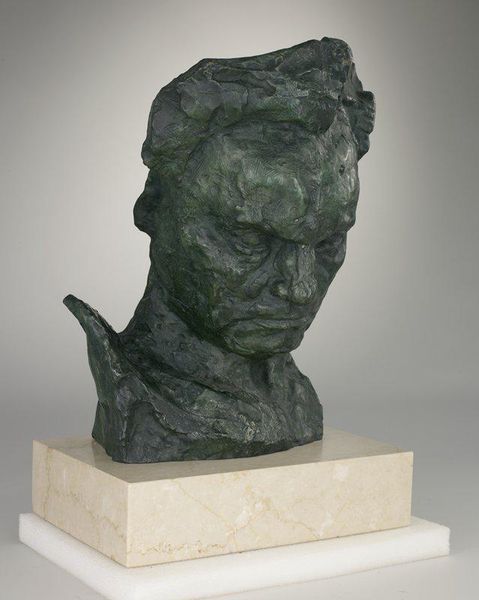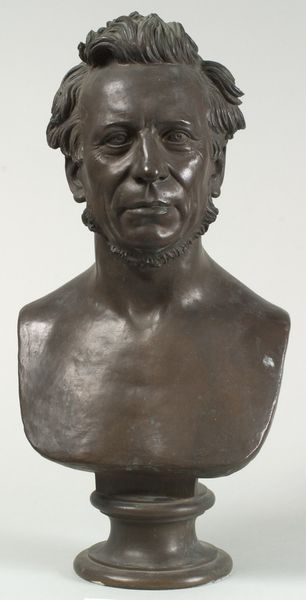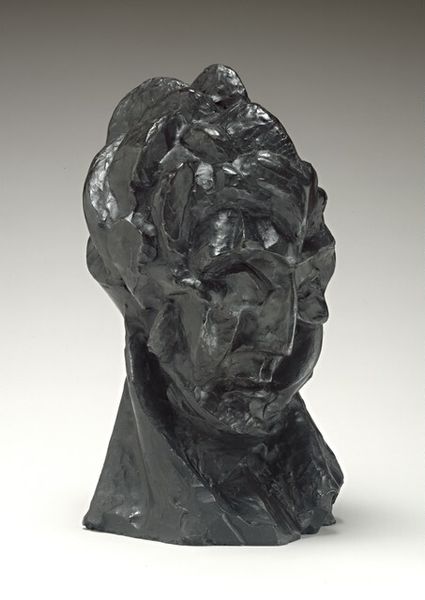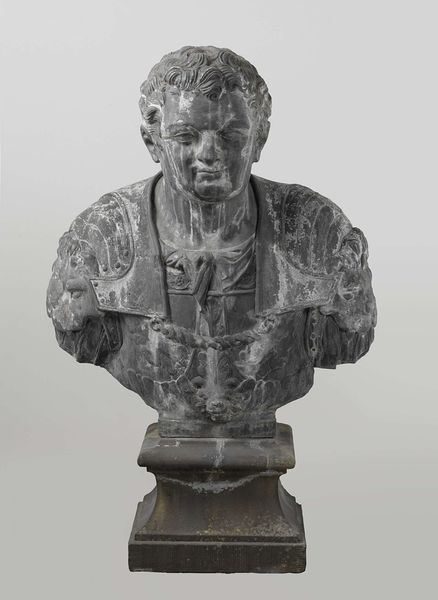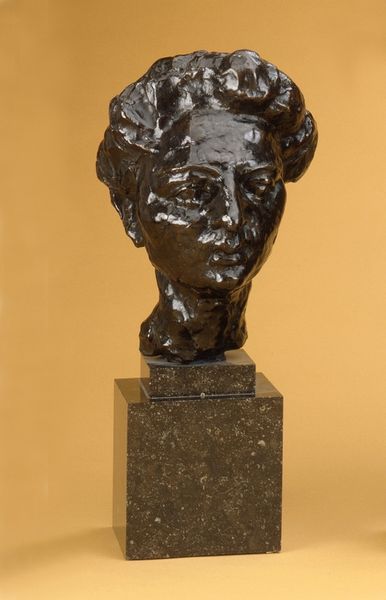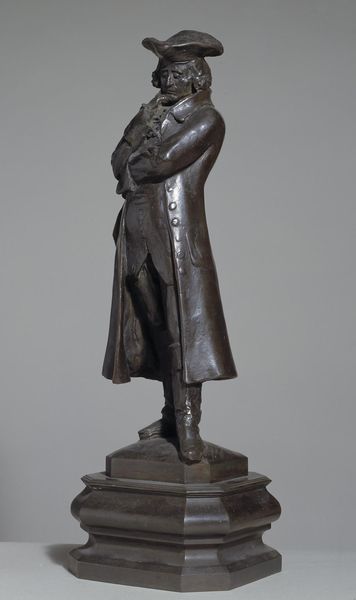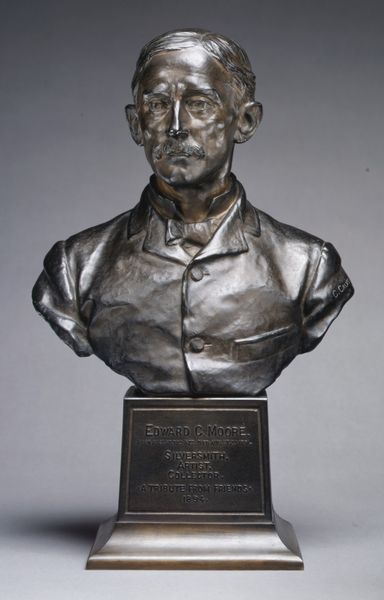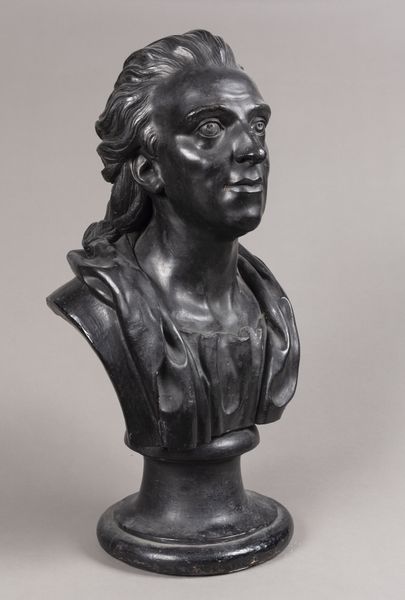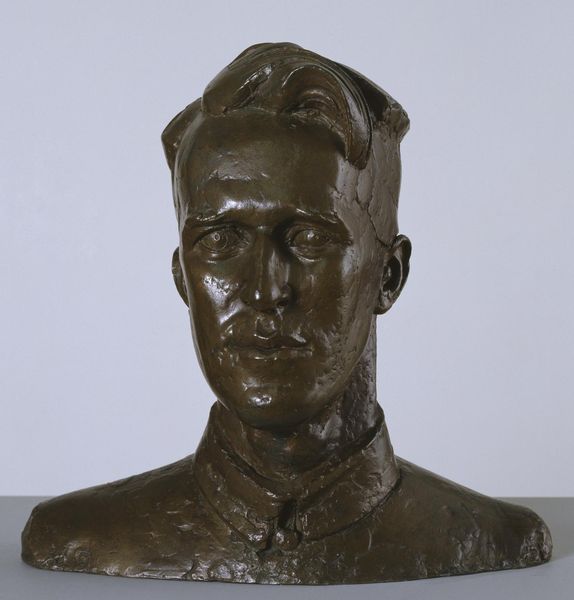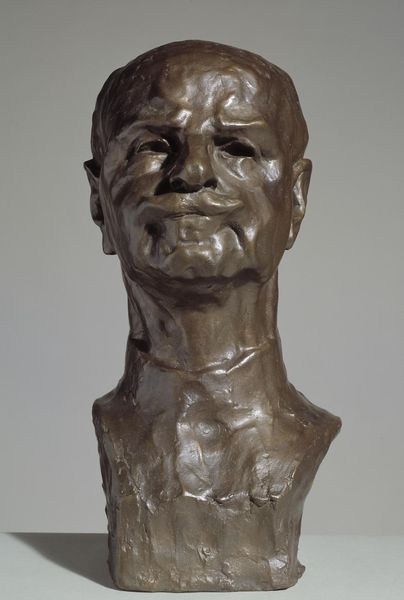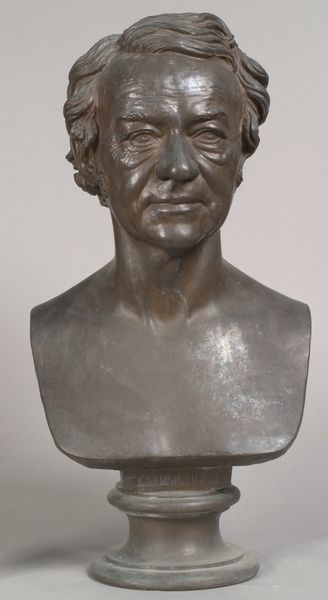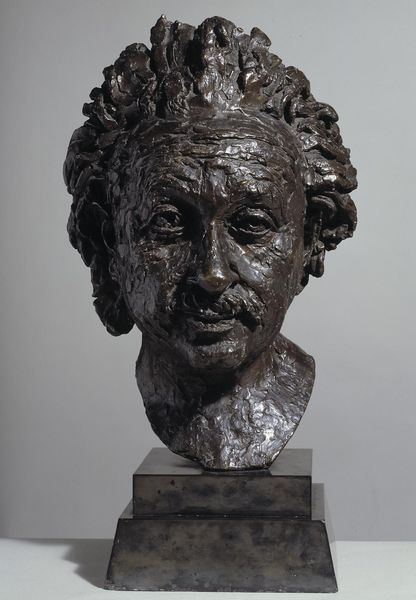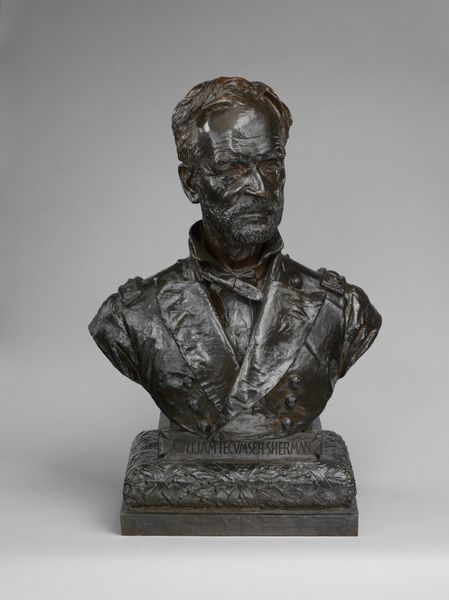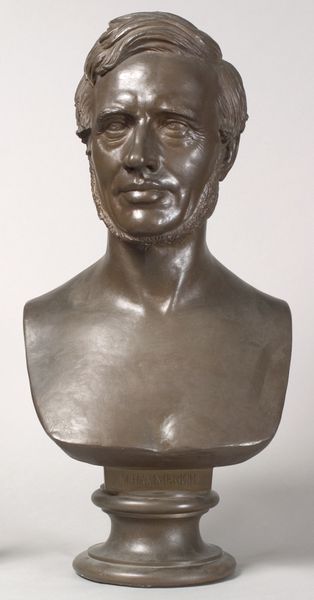
Dimensions: object: 533 x 495 x 342 mm
Copyright: CC-BY-NC-ND 4.0 DEED, Photo: Tate
Curator: This is "Paysan," a bronze sculpture by Edouard Lanteri, who lived from 1848 to 1917. Editor: Its dark patina and sharply defined planes give it a sombre, almost stoic presence. The light catches the roughened surfaces beautifully. Curator: Indeed. The word "paysan," of course, refers to a peasant or countryman. Lanteri’s choice suggests an interest in representing a certain archetype. The heavy brow, the set jaw… it speaks to notions of hard labor, a life etched into the very form. Editor: The artist's touch is evident in the rugged texture of the bronze, adding to the visual weight of the piece. Notice also how the folds of the clothing amplify the figure’s volume. Curator: Yes, the subject is timeless. It captures the essence of a life bound to the earth, embodying a cultural memory of resilience and endurance. Editor: Precisely. It's a fascinating intersection of form and content.
Comments
Join the conversation
Join millions of artists and users on Artera today and experience the ultimate creative platform.
tate 7 months ago
⋮
Lantéri was a French sculptor who followed his master Dalou and moved to London in 1872, after the civil war in Paris. In 1880 he succeeded Dalou as teacher of sculpture at the South Kensington School, which later became the Royal College of Art. He was a successful portrait sculptor in London as well as a teacher.This 'Head' was presented to the Tate Gallery by Lantéri's pupils. It is modelled to give an example of a strong expression, a tradition of art that goes back to the seventeenth-century 'Têtes d'expression' of the French Academy. Gallery label, August 2004
